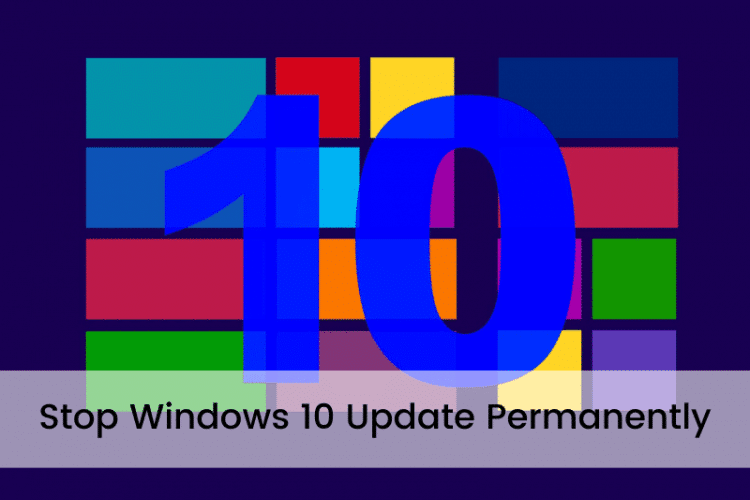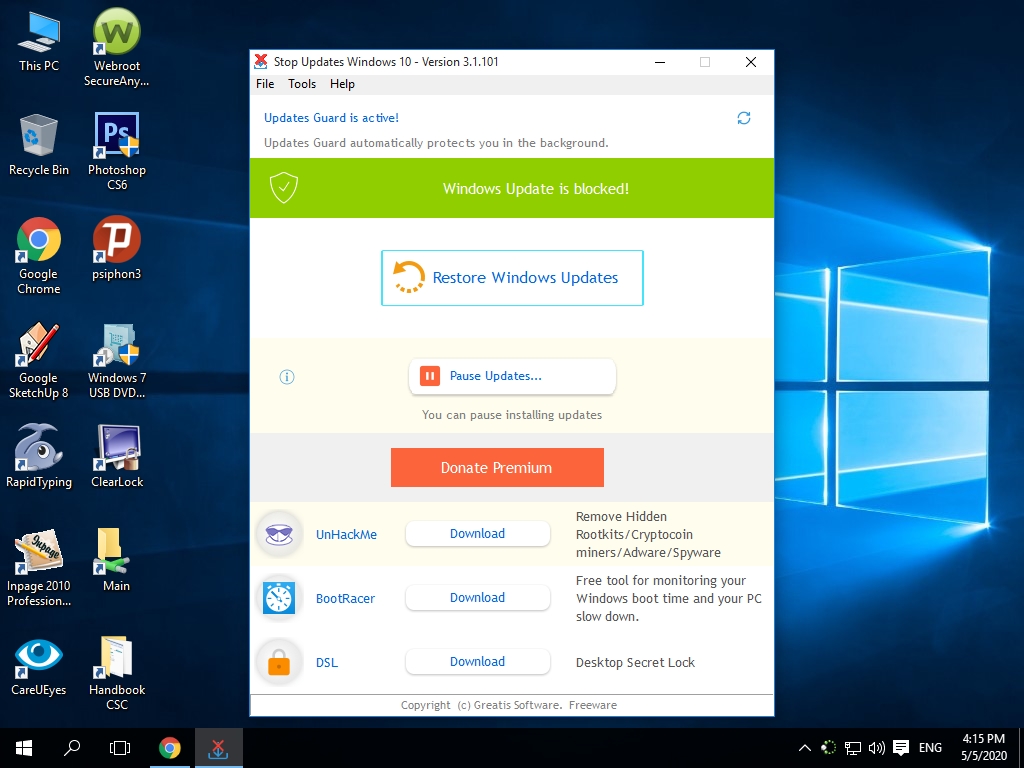
Remember that feature updates are the major Windows 10 updates that launch roughly twice per year. As documented on the Windows 10 Enterprise and Education and Windows 10 Home and Pro lifecycle pages, Windows 10 will reach end of support on October 14, 2025, writes Leznek. The Windows Update Blocker does exactly what it says on the tin: It prevents Microsoft from ever rebooting your PC to install updates or installing updates without permission. Additionally, you can set a start date for the deferral, if you want. The normal setting is Semi-Annual Channel, but you can set it to something faster if you want preview updates or similar.Īfter this, enter the number of days (up to 365) that you want to defer preview builds or feature updates. Set this policy to Enabled, then you'll need to choose your Windows readiness level. Here, open the setting Select when Preview Builds and Feature Updates are received. In the Group Policy Editor (opened the same way as explained above), go to Computer Configuration > Administrative Templates > Windows Components > Windows Update > Windows Update for Business.
#WINDOWS 10 STOP CRITICAL UPDATES HOW TO#
How to Defer Feature Updates for Up to 365 Days As such, this option is not available to users of Windows 10 Home. This option is only a possibility if you have enabled the creation of restore points prior to your stop code problems starting. Nowadays, though, they're in the Group Policy Editor.

The options to defer upgrades used to sit in the Settings app. By this time, however, Microsoft should have fixed any issues that popped up during the initial rollout.

After the grace period has passed, the deferred updates will be deployed automatically.


 0 kommentar(er)
0 kommentar(er)
